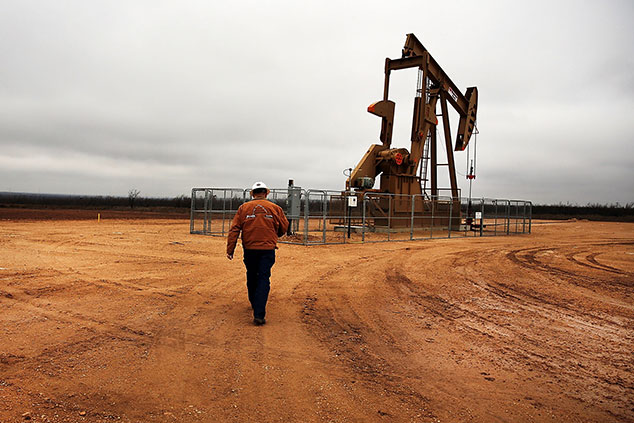
This article is taken from our FREE daily investment email Money Morning.
Every day, MoneyWeek’s executive editor John Stepek and guest contributors explain how current economic and political developments are affecting the markets and your wealth, and give you pointers on how you can profit.
In this week’s issue of MoneyWeek magazine
●
There’s nothing to fear from the rise of the machines
●
A successful first half for fans of investment trusts
●
Three cheap and interesting aircraft leasing funds
●
Three biotech stocks to buy now
●
Avoid rip-off car-hire charges on holiday
● Share tips of the week
Not a subscriber? Sign up here
The oil price has shot up by about 50% in the last 12 months.
At one point, Brent crude oil had hit $80 a barrel.
But in the last week or so, it’s hit a stumbling block.
Are prices heading for another tumble? Or is this just a blip on the way to higher ground?
The oil price had rallied too far, too soon
Here’s a quick summary of what’s happened to the oil price over the past five years or so (regular readers have already seen this a few times, so I’ll keep it short).
In 2014, after defying gravity for a ridiculous length of time, the oil price slid as investors realised that US shale oil production was not a flash in the pan, and that America had become a major global energy producer.
The oil price tumbled from $100 a barrel to below $40 at one point. Oil majors slashed production, shut down ambitious plans to drill in far-off areas, and sacrificed all they could in order to service their dividend payments.
Meanwhile, oil cartel Opec kept on pumping. It didn’t want to lose market share to the US shale oil producers, and it also wanted to drive as many of them as possible to bankruptcy.
But Opec reckoned without 0% interest rates. The shale oil producers – cushioned by a massively forgiving credit backdrop – managed to survive the downturn and just kept on pumping.
Opec – with national budgets wilting under the pressure of sliding oil revenues – gave up first. In late 2016 (by which point, the oil slide had just about exhausted itself anyway), Opec and Russia agreed to cut oil production.
That helped to turn sentiment around again. Oil has rallied sharply since then, and in the last year or so, has gone up by around 50%.
Meanwhile, the fact that oil companies have reined in all their big exploration projects and are still in capital conservation mode rather than “let’s splash the cash” mode has only added to the generally bullish mood.
As I said around about this time last week, there has been a sudden sentiment switch in the oil market. Suddenly, everyone has been talking about how we’re going back to the days of $100 a barrel or more, and how we’re in danger of seeing shortages again.
To me, that had a feeling of “too much, too soon”. A correction of that overly bullish sentiment was necessary, and is not especially surprising.
We’re not great at looking into the future
The thing is, markets are all about expectations; the market prices in what it expects to happen next. If that doesn’t happen, then the market has to reprice the situation.
Sometimes the market gets too optimistic or too pessimistic. Markets have momentum, you see, because the vast majority of human forecasting is based on looking at what happened yesterday and assuming that the same thing will happen tomorrow.
We think of the future as being a straight line, whereas in fact, it’s a curve. Sometimes the curve might be a wave that’s turning up or down in a repetitive cycle – and sometimes it might be part of an exponential growth curve that changes everything.
But it’s not a straight line.
As a result of this misperception, the market gets too excited when things are on the way up, and too nervous when they’re on the way down.
With oil, there has been too much focus on the bull side, and not enough on the bear side. Hence the recent slap down the price has taken.
How enthusiastic should you be about oil if we’re heading into a global trade war? How keen should you be if China slows down? And what about Donald Trump’s apparent plans to open the US emergency oil reserve ahead of the November elections?
When everyone is focusing on the bull side of the argument, these stories carry a lot more weight than when everyone is gloomy.
However, these things move in stages. The market had grown too bullish on oil, but at a fundamental level, there are still a lot of strictures on the supply side (which is what really matters).
The big producers are starting to ramp up new projects again. But there’s a caution there, driven partly by the downturn and partly by the long-term fear of oil being rendered unusable either by climate change regulations or a mass shift to renewable energy.
When optimism about electric vehicles collapses and we‘re all talking about being dependent on oil forever more, you’ll know that the bullishness has gone too far. That’s not happening yet though, and I suspect it’ll be a while before it does.
In this week’s issue of MoneyWeek magazine (out on Friday), my colleague Matthew Partridge looks at why we’re unlikely to see a significantly lower oil price any time soon – and he also looks at some of the best ways to play that. If you don’t already get MoneyWeek, I recommend that you subscribe here now.